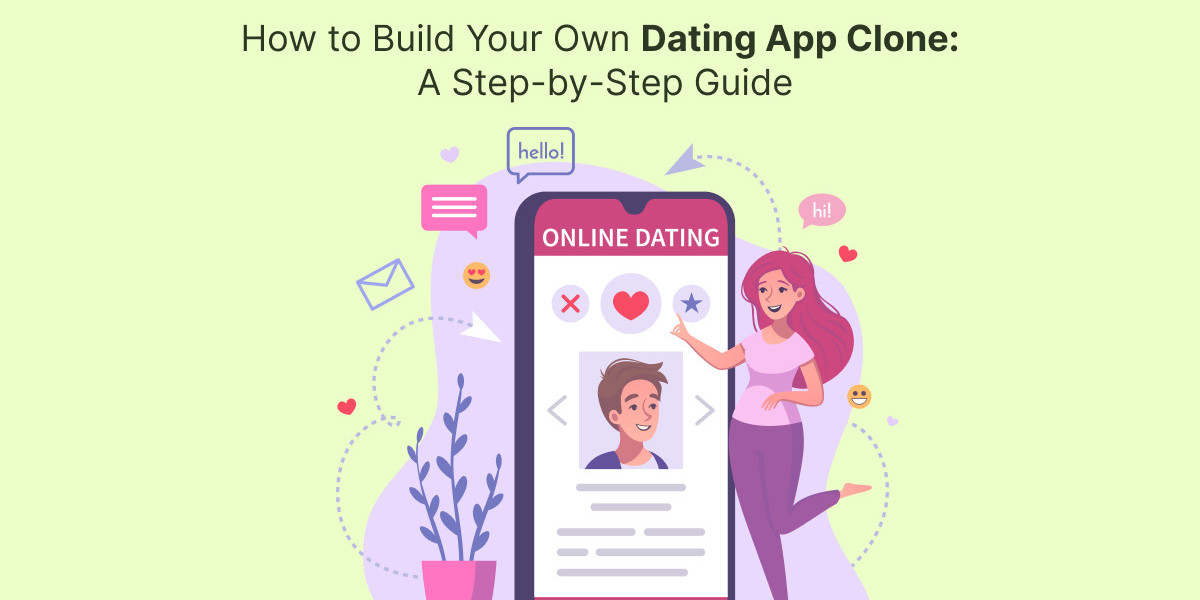Creating a dating app like Tinder or Bumble can be an exciting project. It allows you to enter the growing online dating industry, and with the right features and functionality, your app can offer users an excellent experience. In this guide, we will walk you through the steps involved in building your very own dating app clone.
Step 1: Understand the Basics of a Dating App
Before you jump into the development process, it’s crucial to understand what makes a dating app clone successful. Most dating apps, like Tinder or Bumble, have some key features in common. These include user profiles, matching algorithms, messaging capabilities, and a swipe feature for selecting potential partners.
Step 2: Define the Core Features
Once you know your app's purpose, you need to define the features you want in your dating app clone. Some essential features include:
User Profile Creation
Allow users to create and personalize their profiles. They should be able to upload pictures, add bios, list preferences, and share other important information.
Profile Verification
This feature can add an extra layer of trust to your app. Users can verify their profiles through email, phone number, or even through social media accounts.
Geolocation
Geolocation features help users find matches nearby. You can use geolocation APIs to determine the distance between two users and suggest potential matches within a specific radius.
Swiping Feature
This is one of the most popular features in dating apps. Users swipe right to show interest and left to skip. You need to create a user-friendly and interactive swiping feature for your app clone.
Matchmaking Algorithm
The matchmaking algorithm matches users based on their preferences, location, and other criteria. You can create a custom algorithm that can analyze users’ choices and suggest the most compatible matches.
Chat and Messaging
Once two users have liked each other, they should be able to chat within the app. You can integrate a real-time messaging feature to make this happen.
Push Notifications
Push notifications can alert users about potential matches, new messages, or app updates. This feature helps keep users engaged and encourages them to use the app frequently.
Privacy and Security
For users to feel comfortable on your dating app, privacy and security must be a top priority. Implement secure authentication, encryption, and measures to prevent harassment or misuse of personal information.
Step 3: Design Your Dating App’s Interface
The design of your app plays a major role in its success. Users should be able to navigate the app easily and interact with it without confusion. Here are a few design tips:
Simple User Interface (UI)
Keep the design clean, intuitive, and visually appealing. The goal is to provide an easy-to-use experience for all users, whether they are tech-savvy or not.
Responsive Design
Your app should be responsive and adapt well to different devices, whether it’s on a smartphone, tablet, or desktop.
Branding and Themes
Create a unique theme and branding for your app. You can choose a color scheme that matches the target demographic or the niche you are focusing on. Customizable themes can also allow users to personalize the look and feel of their profiles.
Step 4: Choose the Right Technology Stack
Building a dating app requires choosing the right technology stack. The tech stack refers to the programming languages, frameworks, and tools you use to develop your app. Here are some common choices:
Frontend Development
Frontend development involves the user interface. You can use:
- React Native or Flutter for cross-platform mobile app development (works on both Android and iOS).
- Swift for iOS development.
- Kotlin for Android development.
Backend Development
The backend powers the app’s functionality and database. For the backend, you can use:
- Node.js or Ruby on Rails for building scalable APIs.
- Firebase for real-time database functionality and messaging.
Database
You’ll need a database to store user profiles, messages, preferences, and match data. You can use:
- MongoDB for NoSQL databases, which are scalable and flexible.
- MySQL or PostgreSQL for relational databases.
Real-time Messaging
For real-time messaging, you can use services like Socket.IO or Firebase Cloud Messaging (FCM) to handle chat functionality.
Step 5: Develop and Test the App
Once you've finalized your design and tech stack, the next step is to start coding. This can take time, depending on your app's complexity and the features you want to include. Break down the development process into smaller tasks to ensure the app is built step by step.
Testing the App
After development, it's essential to test your app thoroughly. You need to test the app for functionality, performance, and usability. Make sure to check all features, especially the messaging system and the matching algorithm, to ensure everything works smoothly.
Run the app through different scenarios, including heavy usage, to see how it performs under pressure. Test it on various devices and screen sizes to ensure a seamless experience.
Step 6: Launch and Market Your Dating App
Once your app is ready, it’s time to launch it. But before you launch, you need to create a marketing strategy to attract users. Here are a few ways to market your app:
Social Media Marketing
Promote your dating app on social media platforms like Instagram, Facebook, and Twitter. Use attractive visuals, engage with followers, and create valuable content to keep them interested.
Influencer Marketing
Partner with influencers in the dating or relationship niche to promote your app. They can help you reach a wider audience and bring in users.
Paid Ads
Invest in paid ads on platforms like Google Ads and Facebook Ads. This can help you get more downloads and increase visibility.
App Store Optimization (ASO)
Optimize your app store listing with relevant keywords, attractive screenshots, and compelling descriptions. This helps your app rank higher in search results.
Conclusion
Building a dating app clone requires careful planning, a clear understanding of features, and the right tech stack. Once your app is ready, marketing and promoting it effectively will be key to your success. By following the steps outlined in this guide, you can create a successful dating app that attracts users and keeps them coming back.
In the same way that you can build your own dating app clone, other types of app development are equally achievable. If you are looking to expand your app development horizons, consider exploring Gojek clone app development. This allows you to create an on-demand multi-service app, just like Gojek, and tap into a market that needs various services, such as transportation, food delivery, and much more, all in one platform.




